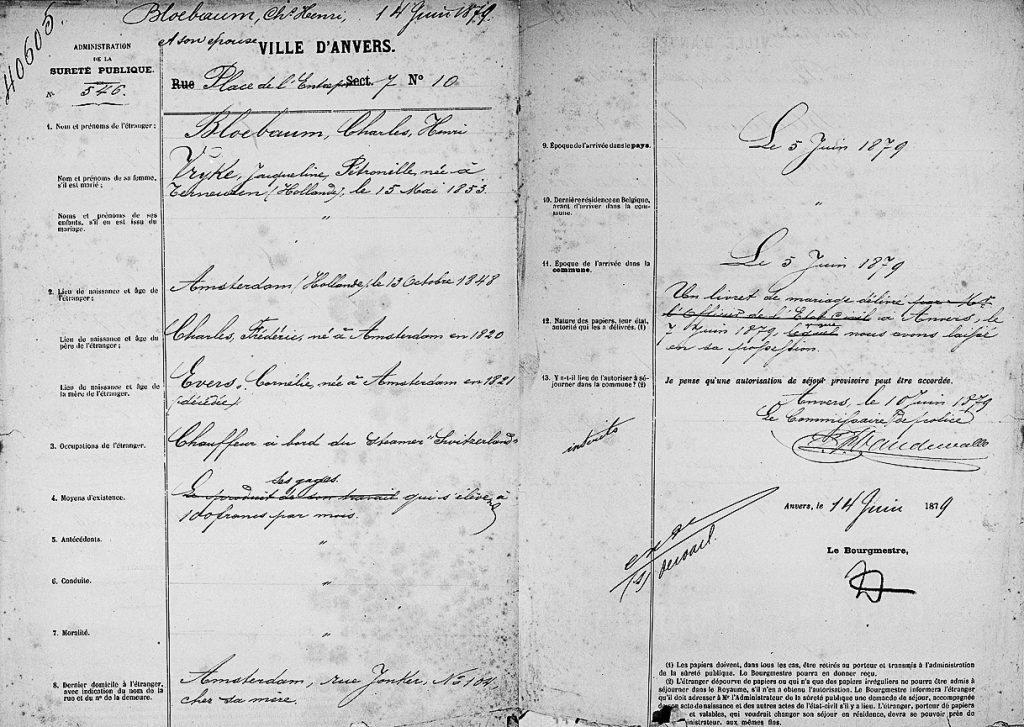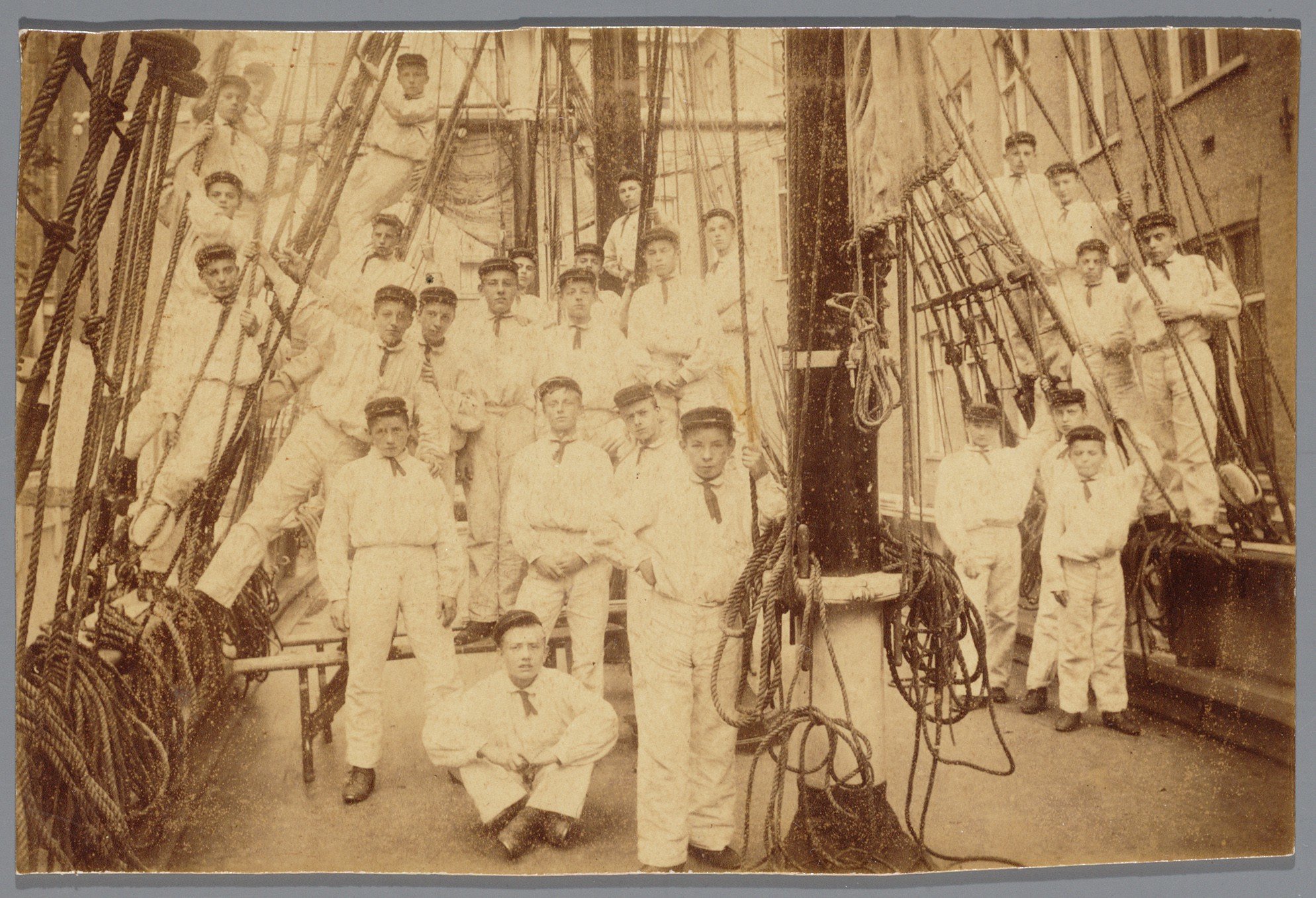
Dutch merchant seamen in Belgian sources
Seafarers have never been bound to a particular flag, which makes it challenging to reconstruct their careers. In this post, Kristof Loockx, postdoctoral researcher at the University of Antwerp and visiting researcher at the Huygens Institute for the History of the Netherlands, addresses a selection of sources that provide more information about Dutch seafarers on the Belgian merchant fleet. In our section on Sailor’s lives, he makes these sources tangible by following two Dutch seafarers who sailed regularly on Belgian merchant vessels during the nineteenth century.
The seamen’s registry
The registration of individual seafarers in Belgium coincided with the introduction of a mandatory insurance for merchant mariners in 1845. Every seaman who sailed on a Belgian-flagged merchant vessel had to register at the office of the maritime commissioner (waterschout) in the Belgian port of departure. The general seamen’s registry for merchant shipping (stamboek der zeelieden) is preserved in its entirety in the State Archives of Antwerp (1845-1930), including a name index with a total of approximately 30,000 mariners (search persons), of whom about 2,000 originated from the Netherlands between 1845 and 1885. The registry lists, among other things, the seafarer’s name, date and place of birth, place of residence, and the names of his parents. Additionally, for each voyage on a Belgian-flagged ship, rank and wage are given, as well as the dates and ports of departure and arrival, and the names of the ship and captain. This is perfect material for career reconstruction.

Zeemansboekjes
From 1850 onwards, seafarers working on Belgian merchant ships also carried a so-called zeemansboekje, comparable to the Dutch monsterboekje, in which the information corresponding to that in the seamen’s registry was added for each voyage. A headshot and physical characteristics of the individual sailor became standardized from the 1920s onwards. Various Belgian archives, such as the City Archives of Antwerp and the Red Star Line Museum, preserve these documents.
Foreigners’ files
Lastly, information about foreign seafarers who decided to reside in Belgium on a more permanent basis can be found in vreemdelingendossiers, in which from 1839 onwards the Sûreté Publique or Foreigners’ Police collected detailed information on all foreigners. A bulletin was filled out upon arrival with standard questions relating to family status, origin, income, occupation and former and current residence of each newcomer. This file was updated when changes occurred. National files are preserved in the State Archives in Brussels and can be consulted online. Local Antwerp files, which are kept in the City Archives of Antwerp, are also online accessible. Many foreign seafarers were just passing through and therefore only a fraction registered with the municipal authorities. The number of Dutch sailors with a file is high compared to many other nationalities, however.


